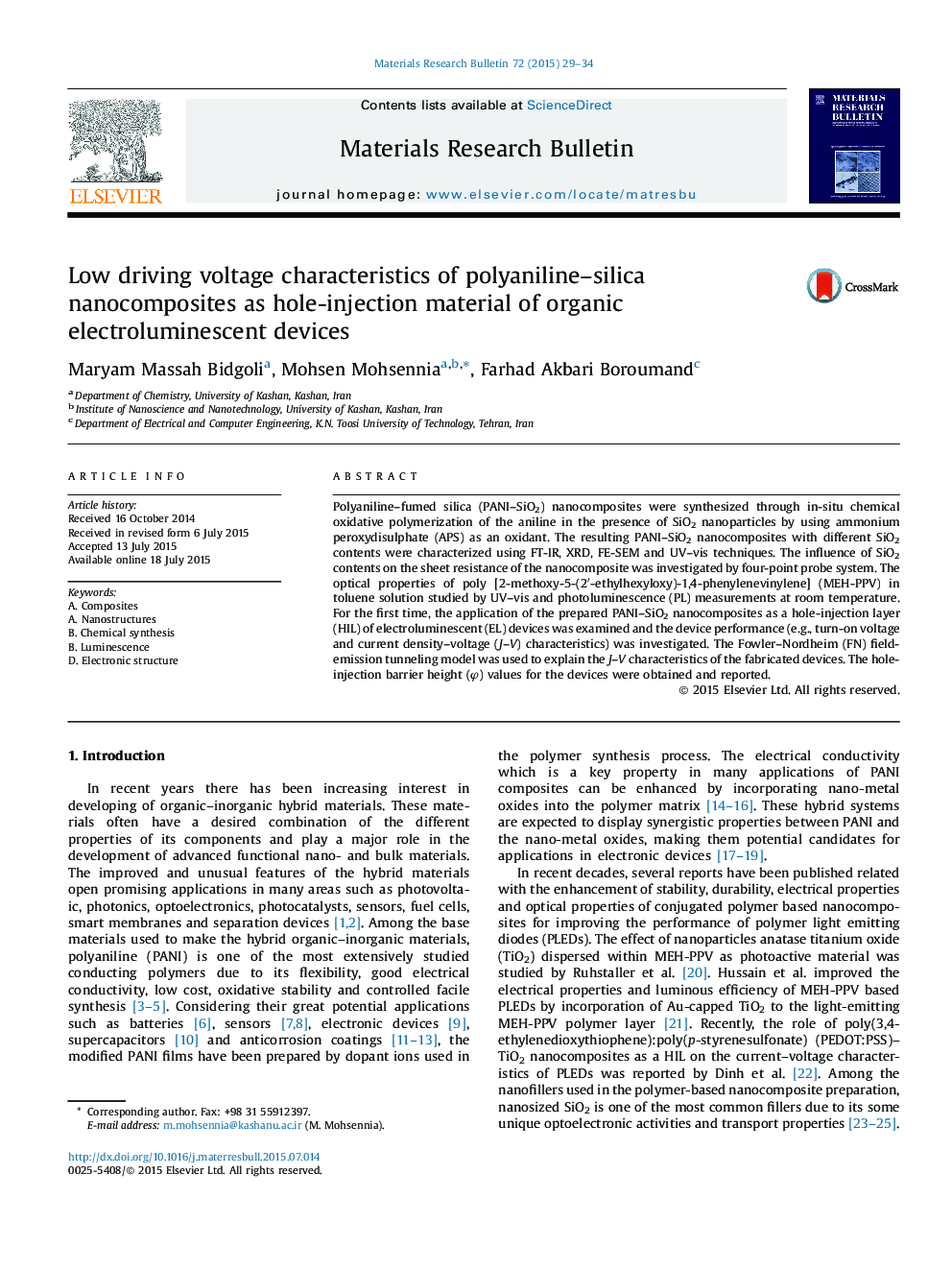| Article ID | Journal | Published Year | Pages | File Type |
|---|---|---|---|---|
| 1487509 | Materials Research Bulletin | 2015 | 6 Pages |
•PANI–SiO2 nanocomposites were synthesized and characterized.•The nanocomposites have been used as hole-injection layer in EL devices.•The effect of PANI–SiO2 films over the EL device performances has been investigated.•The FN tunneling model has been used to explain the J–V characteristic of the devices.•The hole-injection barrier height values for the devices were obtained and reported.
Polyaniline–fumed silica (PANI–SiO2) nanocomposites were synthesized through in-situ chemical oxidative polymerization of the aniline in the presence of SiO2 nanoparticles by using ammonium peroxydisulphate (APS) as an oxidant. The resulting PANI–SiO2 nanocomposites with different SiO2 contents were characterized using FT-IR, XRD, FE-SEM and UV–vis techniques. The influence of SiO2 contents on the sheet resistance of the nanocomposite was investigated by four-point probe system. The optical properties of poly [2-methoxy-5-(2′-ethylhexyloxy)-1,4-phenylenevinylene] (MEH-PPV) in toluene solution studied by UV–vis and photoluminescence (PL) measurements at room temperature. For the first time, the application of the prepared PANI–SiO2 nanocomposites as a hole-injection layer (HIL) of electroluminescent (EL) devices was examined and the device performance (e.g., turn-on voltage and current density–voltage (J–V) characteristics) was investigated. The Fowler–Nordheim (FN) field-emission tunneling model was used to explain the J–V characteristics of the fabricated devices. The hole-injection barrier height (φ) values for the devices were obtained and reported.
Graphical abstractFigure optionsDownload full-size imageDownload as PowerPoint slide
